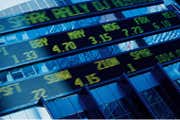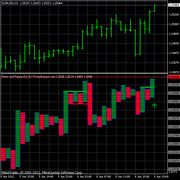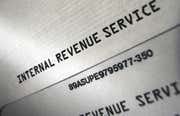
|
Open any financial paper and you will see stock quotes that look something like the image below. In this section, we'll explain how to make sense of these tables so that you can use the information to your advantage.
Let's take a look at the stock/quotes table:
 |
Columns 1 & 2: 52-Week High and Low. These are the highest and lowest prices at which a stock has traded over the past 52 weeks (1 year). This typically does not include the previous day's trading.
Column 3: Company Name and Type of Stock. This column lists the name of the company. If there are no special symbols or letters following the name, it is common stock. Different symbols imply different classes of shares. For example, "pf" means the shares are preferred stock.
Column 4: Ticker Symbol. This is the unique alphabetic name which identifies the stock. If you watch financial TV, the ticker tape will quote the latest prices alongside this symbol. If you are looking for stock quotes online, you always search for a company by the ticker symbol. If you don't know a particular company's ticker symbol, you can search for it at Yahoo Finance.
Column 5: Dividend Per Share. This indicates the annual dividend payment per share. If this space is blank, the company does not currently pay out dividends.
Column 6: Dividend Yield. The percentage return on the dividend, dividend yield is calculated as annual dividends per share divided by price per share.
Column 7: Price/Earnings Ratio (P/E ratio). This is calculated by dividing the current stock price by earnings per share from the last four quarters. (For more on how to interpret this, see Understand The P/E Ratio.)
Column 8: Trading Volume. This figure shows the total number of shares traded for the day, listed in hundreds. To get the actual number traded, add two zeros to the end of the number listed.
Column 9 & 10: Day High and Low. This indicates the price range in which the stock has traded throughout the day. In other words, these are the maximum and the minimum prices that people have paid for the stock.
Column 11: Close. The close is the last trading price recorded when the market closed on the day. If the closing price is more than 5% above or below the previous day's close, the entire listing for that stock is bold-faced. Keep in mind, you are not guaranteed to get this price if you buy the stock the next day because the price is constantly changing, even after the exchange is closed for the day. The close is merely an indicator of past performance and, except in extreme circumstances, it serves as a ballpark of what you should expect to pay.
Column 12: Net Change. This is the dollar value change in the stock price from the previous day's closing price. When you hear about a stock being "up for the day," it means the net change was positive.
Quotes on the Internet
Nowadays, it's far more convenient for most people to get stock quotes off the internet. This method is superior because most sites update throughout the day and give you more information, news, charting and research.
To get quotes, simply enter the ticker symbol into the quote box of any major financial site like Yahoo Finance, CBS Marketwatch, or Quicken.com. The example below shows a quote for Microsoft (MSFT) from Yahoo Finance. The data can be interpreted exactly as it would if it were from the newspaper.
 |
Financial Tables: Stock Ticker
Related Articles
-
 Investing
InvestingHow To Read A Stock Ticker
In order to properly read stock tickers, you must know how it is used for determining the market's trend. Learn how to read a stock ticker today. -
 Insights
InsightsHow to Understand a Stock Quote
Trading stocks is a popular way to invest money. Learn the details of a quote and what its information suggests, including pricing data and charts. -
 Trading
TradingUnderstanding The 2010 Options Symbology
There is a wealth of information in the expanded option symbols, but they should make things easier for traders. -
 Trading
TradingTesting Point-and-Figure Patterns
Learn the patterns that will help you pinpoint and profit from breakouts. -
 Taxes
TaxesThe IRS Form 8949
Anytime you sell or exchange capital assets, you must report the transaction on your federal income tax return. -
 Investing
InvestingThe 3 Biggest Misconceptions of Dividend Stocks
Learn about three dividend stock misconceptions and how to avoid them for greater gains.


